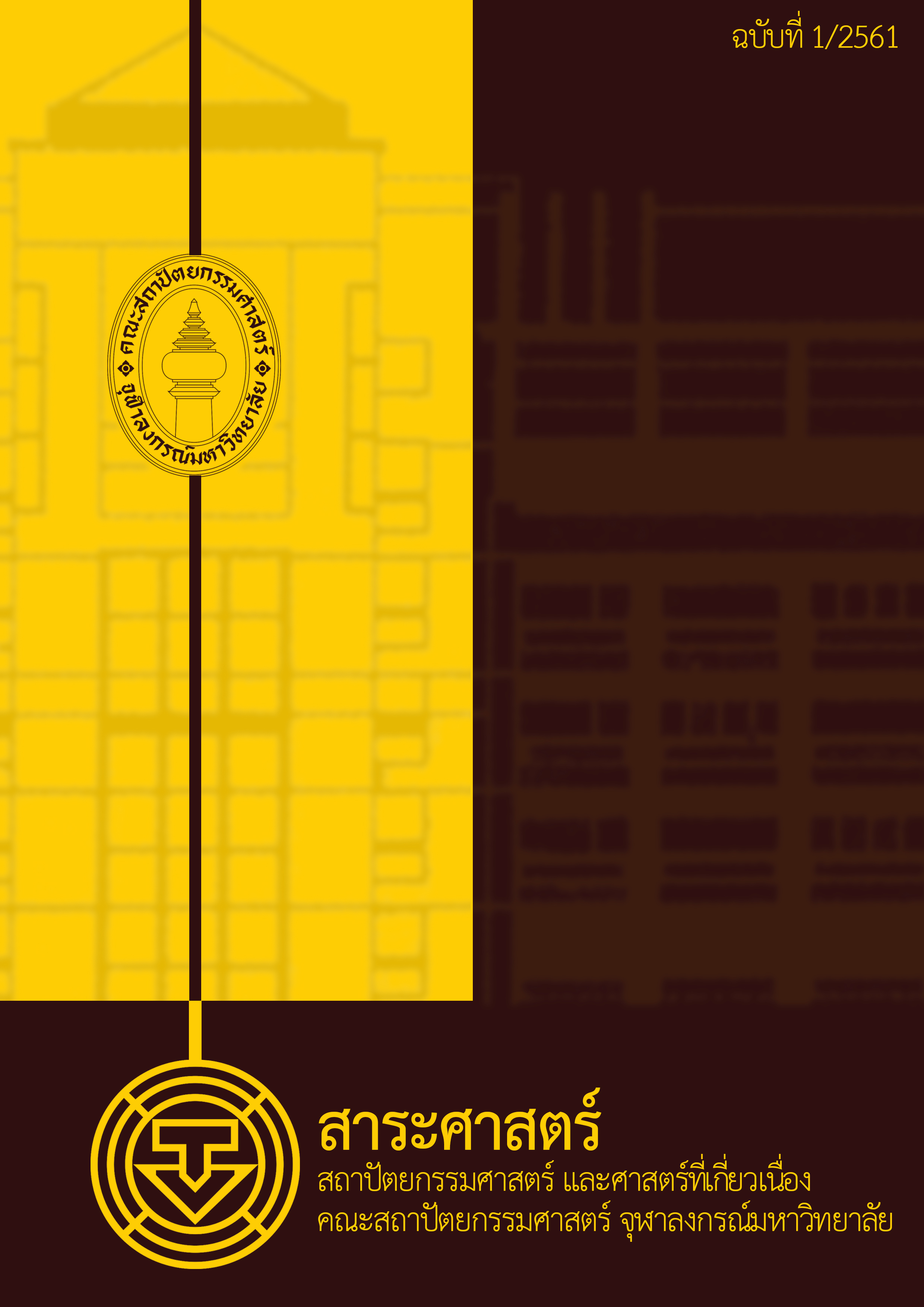The Construction and Installation of Round Relief Sculptures in Bangkok: The Case of Extra-Large Buildings, 1981-2017 The Case of Extra-Large Buildings, 1981-2017
Main Article Content
Abstract
Since 1981 sculptures were installed as aesthetic elements as parts of buildings and constructions in order to create uniqueness and identity of spaces. Researcher had found the increasing of numbers of sculpture installations within Bangkok with different processes of construction and installation.
This research focused on study, analyze, and categorize the construction and installation of round relief sculpture in Bangkok building by applied concepts and theories about sculptures along with project and construction management theories. The researcher had conducted surveys and in depth interview methods with project owners, landscape architectures, and sculptors of 23 building in Bangkok area.
The results showed the most common materials are bronze, fiberglass and stainless steel, respectively. The procurement can be classified to 3 categories; direct purchasing, auction bidding, and design competition. In terms of construction and installation process, there are 5 mutual steps; 1) Sculpture assignment 2) Sculpture design process 3) Sculpture purchasing decision 4) Sculpture construction 5) Sculpture installation.
These 5 processes are highly related to 5 project and construction management stages. According to the case study on 23 buildings; Process of sculpture assignment related to state of project assignment and stage of project design - 8 Buildings, Process of sculpture design related to stage of project design - 12 Buildings, Process of sculpture purchasing decision related to stage of project construction – 11 Buildings, Process of sculpture construction related to stage of project construction - 19 Buildings, and Process of sculpture installation related to stage of project after construction - 17 Buildings.
In conclusion, this research demonstrated the relations of sculpture installation with the construction management and the necessity of harmonies coordination between who associated with the project. Therefore, the project framework is highly recommended to properly plan the construction and installation process in order to achieve the best outcomes.
Article Details
References
นนทิวรรธน์ จันทนะผะลิน. “ประติมากรรมกับสิ่งแวดล้อมในประเทศไทย.” วารสารราชบัณฑิตยสถาน 32, 3 (2550): 667-672.
นนทิวรรธน์ จันทนะผะลิน.“ภาพประติมากรรมและสิ่งแวดล้อมในสมัยรัตนโกสินทร์.” วารสารราชบัณฑิตยสถาน 32, 4 (2550): 922-927.
วิบูลย์ ลี้สุวรรณ. ศิลปะสมัยใหม่และศิลปะร่วมสมัยในประเทศไทย. กรุงเทพฯ: ต้นอ้อ ๑๙๙๙, 2542.
วิบูลย์ ลี้สุวรรณ. สาระน่ารู้ในศิลปะ. กรุงเทพฯ: โอเอสพริ้นติ้งเฮ้าส์, 2531.
CM49. PMCM รู้ก่อนสร้าง. กรุงเทพฯ: ลายเส้น, 2558.
The Greater Des Moines Public Art Foundation. “Percent for Art Program: Toward a Beautiful Future.” Accessed January 10, 2017. https://dsmpublicartfoundation.org/percent-for-art-program-toward-a-beautiful-future/.
Lynch, K. The Image of the City. Cambridge, MA.: The M.I.T. Press, 1960.
Wahenknecht-Harte, K. Site+Sculpture: The Collaborative Design Process. New York: Van Nostrand, 1989.


